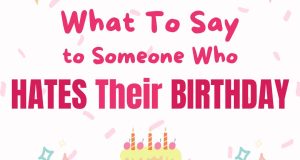Getting a fade haircut is one of the most popular choices for a modern and stylish look.
A fade refers to how the hair gradually shortens from the top of your head to your neckline.
There are many variations of fades, and it is essential to communicate clearly with your barber to ensure you get the specific fade you want.
What to Say to Barber for a Fade
Here is a step-by-step guide on what to tell your barber for a fade haircut:

1. Know the Different Types of Fades
Before heading to the barber, understand the different types of fades. Each type of fade can be customized to suit your style and hair type.
Here are the most common fades you can choose from:
Low Fade
– The fade starts low, just above the ears, and gradually tapers down the sides and back.
– This type of fade offers a more subtle, classic look, with less contrast between the top and the sides.
– Ideal for conservative looks or for those who want a neat and professional style.
Mid Fade
– The fade begins around the temples or middle of the head, creating more contrast between the longer hair on top and the shorter sides.
– A mid fade is a versatile option, as it’s more noticeable than a low fade but not as extreme as a high fade.
– Great for a modern yet balanced style.
High Fade
– The fade starts higher on the head, usually around the forehead or upper temples, creating a dramatic contrast.
– A high fade gives a bold, edgy appearance, with a sharp transition between the top and the sides.
– Ideal for those seeking a striking, fashionable look with maximum impact.
Skin Fade / Bald Fade
– In a skin fade, the hair gradually fades down to the skin, leaving no hair at the bottom.
– This fade can be low, mid, or high depending on where you want the fade to start.
– Perfect for a clean and sharp look with a crisp finish.
Taper Fade
– This fade gradually shortens the hair, but unlike a skin fade, it doesn’t completely go down to the skin. The hair tapers off instead.
– Taper fades are subtle and clean, suitable for those looking for a neat but not overly dramatic style.
2. Choose Your Fade Length
After deciding on the type of fade you want (low, mid, high, or skin), you need to determine how short the fade should be.
Barbers typically use clipper guard numbers to define the length.
Clipper Guard Numbers:
– #1 guard: Leaves about 1/8 inch (3mm) of hair. Very short and close to the skin.
– #2 guard: Leaves about 2/8 inch (6mm) of hair. A bit longer but still quite short.
– #3 guard: Leaves about 3/8 inch (10mm) of hair. Short but gives a bit more coverage.
– #4 guard: Leaves about 4/8 inch (13mm) of hair. Medium-length fade, less aggressive.
You can also ask for a “zero” fade, which is when the fade transitions directly from skin to the top, without any guard.
3. Specify the Length on Top
The top length is essential for complementing your fade.
Be specific about how much length you want to keep on top and how you plan to style it.
You can tell your barber:
– Short: If you want the top to be cropped, ask for a length of about 1-2 inches. This works well with textured crops or short pompadours.
– Medium: Keeping the top around 2-4 inches gives you more styling options, like a side part, quiff, or messy texture.
– Long: For a more dramatic contrast, leave the top longer (4 inches or more) for styles like a slick-back, comb-over, or pompadour.
4. Decide on the Fade Transition
Fade haircuts are all about the transition from long to short, and this can be gradual or sharp depending on the look you want.
– Gradual/Blended Fade: The hair transitions smoothly from longer on top to shorter on the sides. This gives a soft, seamless look. If you want a fade that blends naturally into the top, tell your barber you want a gradual fade.
– Sharp/Disconnected Fade: A disconnected fade features a sharper contrast between the long top and the short sides, often with an undercut effect. If you want a striking look with a defined separation between the top and sides, request a disconnected fade.
5. Discuss Your Hairline and Neckline
The way your barber finishes the fade around your neck and hairline can make a big difference in the final look.
– Hairline: Ask if you want a natural or sharp hairline. A natural hairline follows your natural growth, while a sharper line is more defined and geometric.
– Neckline: There are three main neckline options:
– Blocked/Squared: A straight, defined neckline that gives a sharp, clean finish.
– Rounded: A softer, curved neckline that follows the natural shape of your neck.
– Tapered/Faded: The hair gradually fades down to the neckline, giving a more natural look.
6. Consider Additional Customizations
Fades are highly customizable, so here are a few additional tweaks you can request for a unique look:
– Hard Part: A hard part is a shaved line that separates sections of hair, usually on the side. This adds a sharp, modern touch to any fade.
– Texture: Ask for added texture on top if you want a more tousled, messy look. This works well with fades when you want the top to have volume and movement.
– Beard Fade: If you have facial hair, you can ask for a beard fade, where your barber gradually blends your fade into your beard for a cohesive look.
7. Tell Your Barber About Your Maintenance Preferences
Your fade will look sharp right after the cut, but fades tend to grow out quickly. If you don’t want to return to the barber often, ask for a slightly longer fade. Conversely, if you don’t mind getting touch-ups every few weeks, go for a skin fade or shorter guard.
8. Clarify Your Styling Routine
Discuss how you style your hair at home. If you prefer low-maintenance hairstyles, mention that to your barber so they can cut your hair accordingly. If you style your hair daily with pomade, gel, or other products, they might suggest keeping more length on top for flexibility.
9. Check the Mirror and Ask Questions
Don’t be afraid to check in with your barber during the cut to ensure everything is going as you expect. Look in the mirror and ask questions like:
– “How high will the fade go?”
– “Can you show me how short the #1 guard will look?”
– “Could you make the fade a bit more gradual?”
10. Post-Cut Feedback
If you’re happy with the cut, let your barber know. Positive feedback helps the barber remember your preferences for future visits. If something isn’t right (e.g., you wanted a lower fade or a longer top), politely mention it. Most barbers appreciate the feedback and can make adjustments.
Example Phrases to Use with Your Barber
– “I’d like a high fade with a #2 guard.”
– “I want the sides faded with a skin fade starting at mid-level.”
– “Can you give me a gradual fade that blends into the top?”
– “I’m looking for a high fade with a hard part and a longer top.”
– “Could you do a low fade that tapers into the neckline?”
What to Tell Barber for Fade Haircut
When asking for a fade haircut, the key is to be specific and clear about the type of fade, the length you want, and how you prefer the transition between the top and sides.
Mention the length on top, how high you want the fade to start, and any finishing touches, such as the neckline or a beard fade.
With this guide, you will be well-prepared to communicate exactly what you want and ensure a sharp, stylish result every time.





No Responses